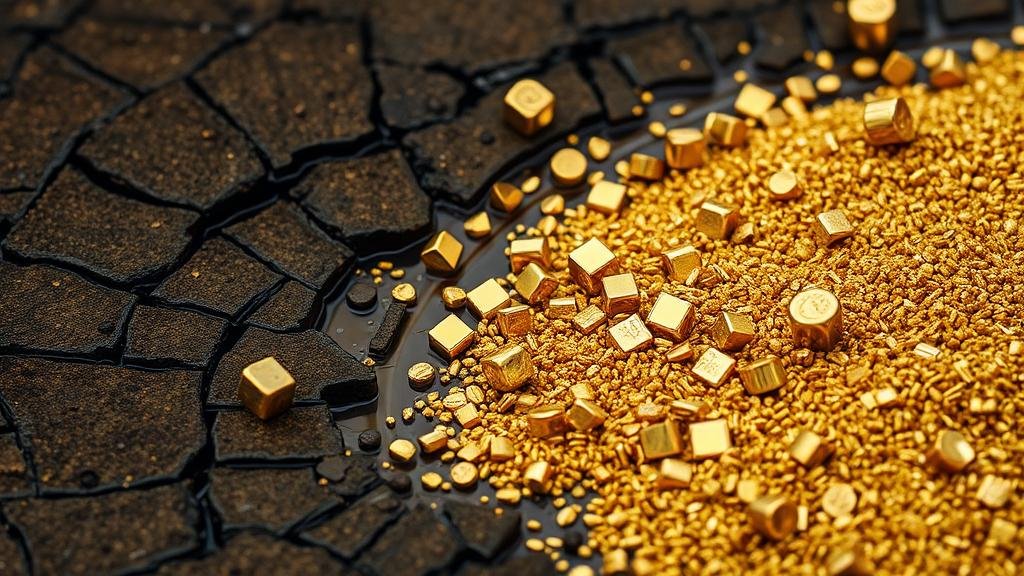Techniques for Recovering Precious Metals From Marine Sediment Deposits
Techniques for Recovering Precious Metals From Marine Sediment Deposits
The extraction of precious metals from marine sediment deposits presents an interesting intersection of marine engineering, geology, and economic viability. With the global emphasis on sustainability and recycling, the potential for recovering metals like gold, silver, and platinum from ocean floors is becoming increasingly regarded as a viable enterprise. This article discusses various techniques employed in this field, supported by case studies and real-world applications.
Overview of Marine Sediment Deposits
Marine sediments can accumulate several valuable minerals over time through natural processes, including erosion and organic deposition. e sediments are typically found at the ocean bed, often rich in metals that have various industrial applications.
According to the United States Geological Survey (USGS), marine sediments primarily include:
- Terrigenous sediments derived from land erosion.
- Biogenous sediments consisting of biological activity.
- Hydrogenous sediments that precipitate directly from seawater.
Prospecting and Preliminary Assessment
Before recovery techniques are employed, a detailed prospecting phase is essential. Geophysical surveys and sampling techniques are used to identify areas with high concentrations of precious metals. Techniques commonly used include:
- Magnetometry: Utilizing magnetic signatures to identify mineral concentrations.
- Sonar Mapping: Employing sonar to visualize the seabed and detect anomalies indicative of metallic deposits.
Recovery Techniques
Once promising sites are identified, various recovery methods can be employed. e techniques vary in complexity and effectiveness, depending on the material composition and site conditions.
Hydraulic Dredging
Hydraulic dredging utilizes high-pressure water jets to fluidize sediments, which are then pumped to the surface for processing. This technique is particularly effective for softer sediments, where metals can be separated post-recovery. A notable example is the offshore dredging operations conducted in the Gulf of Mexico.
Deep-Sea Mining Machinery
The application of specialized equipment, such as remotely operated vehicles (ROVs), has advanced recovery methods significantly. e vessels can navigate harsh underwater environments while employing tools to collect and analyze sediment samples. For example, the company Nautilus Minerals has been at the forefront of employing ROV technology for its Solwara 1 project in Papua New Guinea.
Biochemical Techniques
Recent advances in biotechnology have led to the exploration of using microorganisms to recover metals from sediments. Certain bacteria can absorb precious metals, allowing for a more environmentally friendly recovery method. Research conducted on chromate-reducing bacteria indicates a promising potential for this approach in marine contexts.
Processing and Refinement
After recovery, the sediment must undergo refining to extract the targeted metals. Common refinement techniques include:
- Gravity separation: Utilizing the differing densities of materials to separate metals.
- Cyanidation: A chemical process for the extraction of gold from ores, suitable for high concentrations.
Environmental and Regulatory Considerations
The recovery of precious metals from marine environments raises several environmental concerns. Disturbing marine habitats, potential pollution, and the long-term impacts on biodiversity necessitate stringent regulatory frameworks. Organizations such as the International Seabed Authority (ISA) regulate underwater mining activities to ensure sustainable practices are employed.
For example, seabed mining operations near Papua New Guinea faced considerable backlash from environmental groups regarding potential damage to marine ecosystems.
Conclusion and Future Prospects
The techniques for recovering precious metals from marine sediments are evolving, with a growing focus on sustainability and minimizing environmental impact. As technology progresses and regulatory frameworks strengthen, the feasibility of widespread marine mineral recovery could transform resource extraction paradigms.
Actionable takeaways for industry stakeholders include staying informed about technological advancements, understanding regulatory requirements, and engaging in sustainable practices to foster a balance between resource recovery and environmental stewardship.



